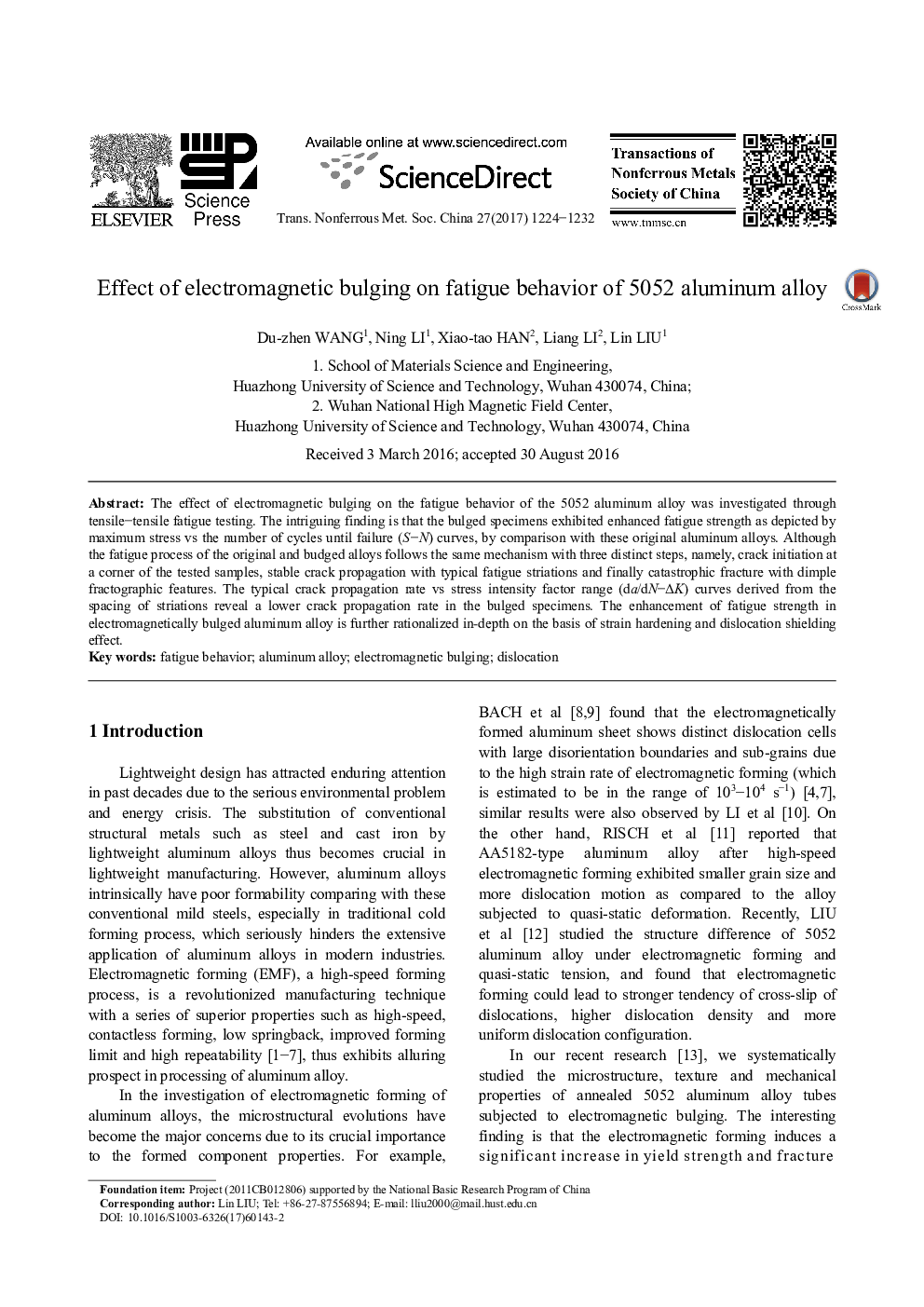| Article ID | Journal | Published Year | Pages | File Type |
|---|---|---|---|---|
| 8011888 | Transactions of Nonferrous Metals Society of China | 2017 | 9 Pages |
Abstract
The effect of electromagnetic bulging on the fatigue behavior of the 5052 aluminum alloy was investigated through tensile-tensile fatigue testing. The intriguing finding is that the bulged specimens exhibited enhanced fatigue strength as depicted by maximum stress vs the number of cycles until failure (S-N) curves, by comparison with these original aluminum alloys. Although the fatigue process of the original and budged alloys follows the same mechanism with three distinct steps, namely, crack initiation at a corner of the tested samples, stable crack propagation with typical fatigue striations and finally catastrophic fracture with dimple fractographic features. The typical crack propagation rate vs stress intensity factor range (da/dN-ÎK) curves derived from the spacing of striations reveal a lower crack propagation rate in the bulged specimens. The enhancement of fatigue strength in electromagnetically bulged aluminum alloy is further rationalized in-depth on the basis of strain hardening and dislocation shielding effect.
Related Topics
Physical Sciences and Engineering
Materials Science
Metals and Alloys
Authors
Du-zhen WANG, Ning LI, Xiao-tao HAN, Liang LI, Lin LIU,
